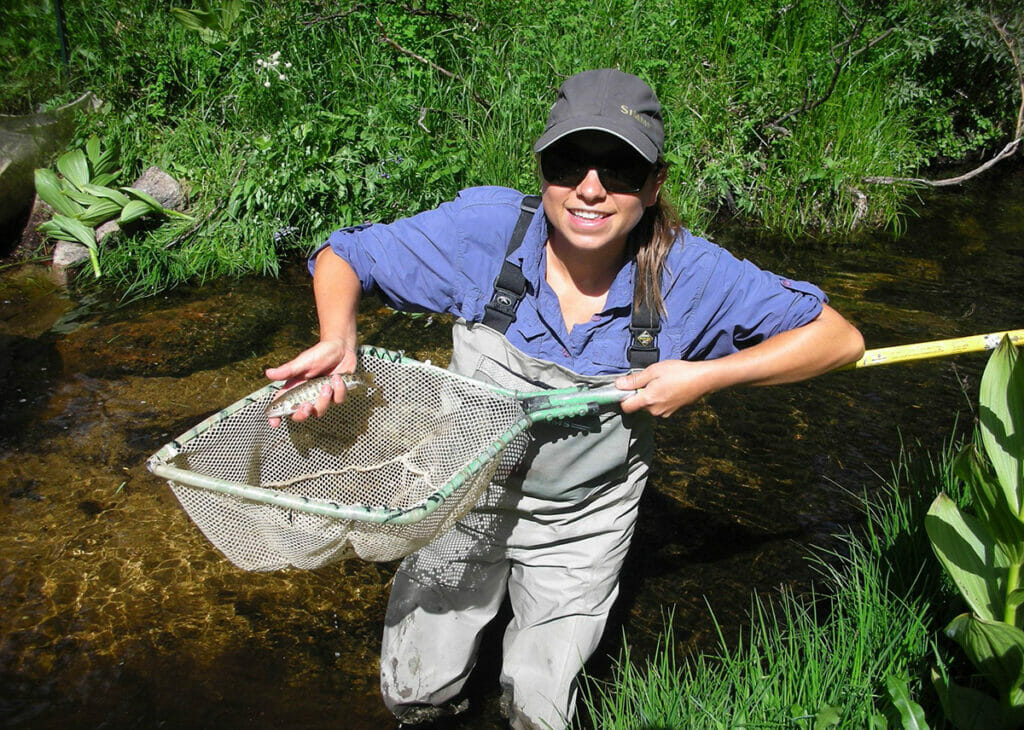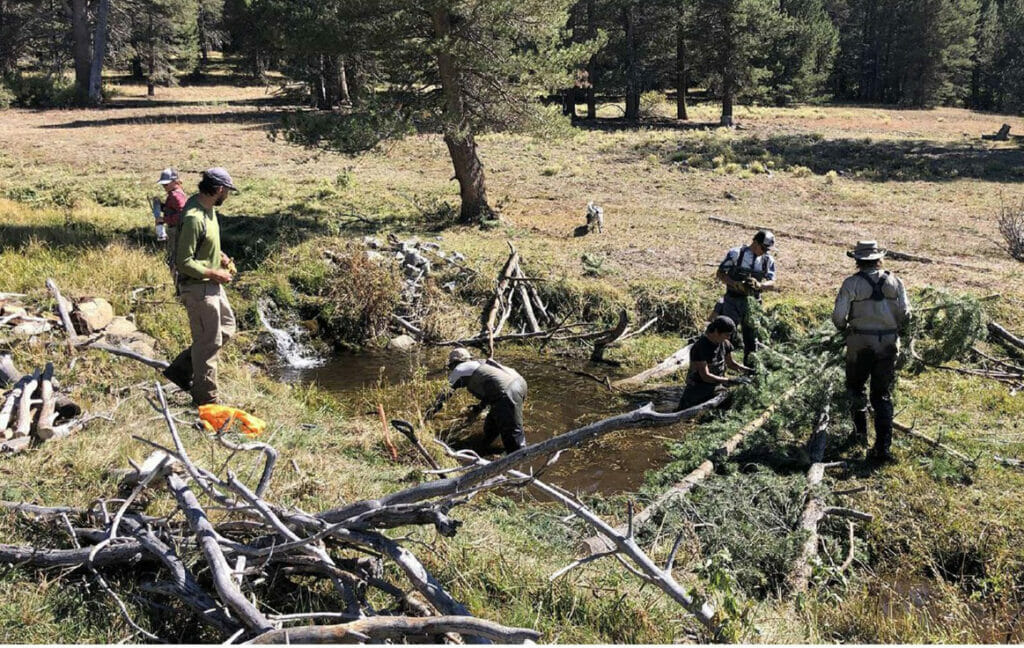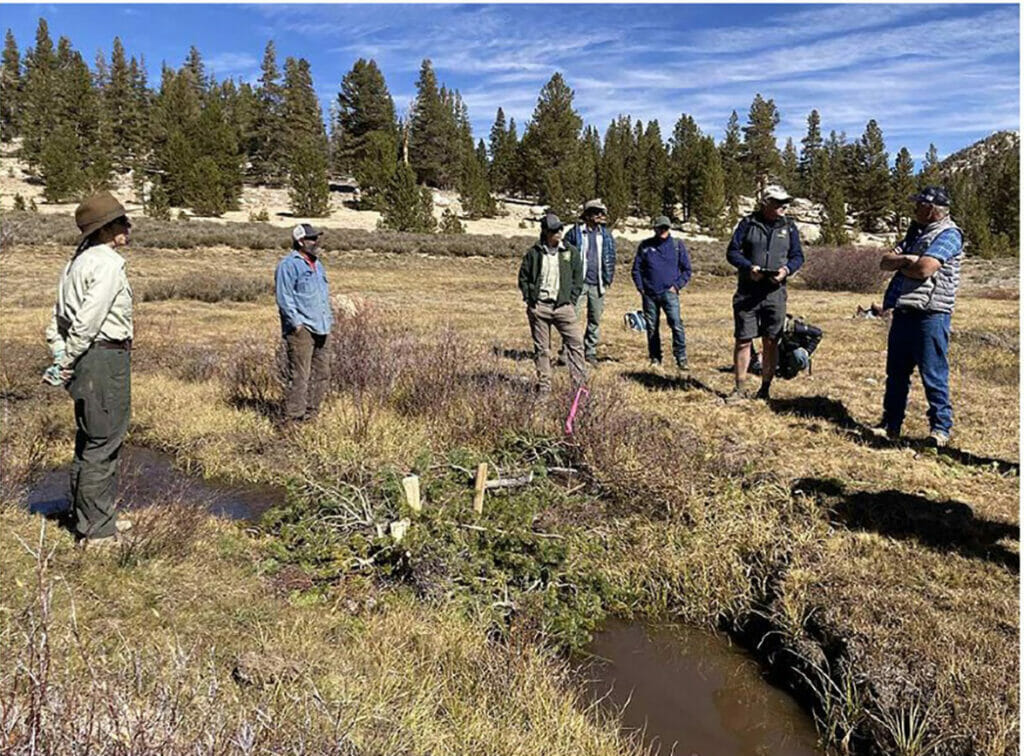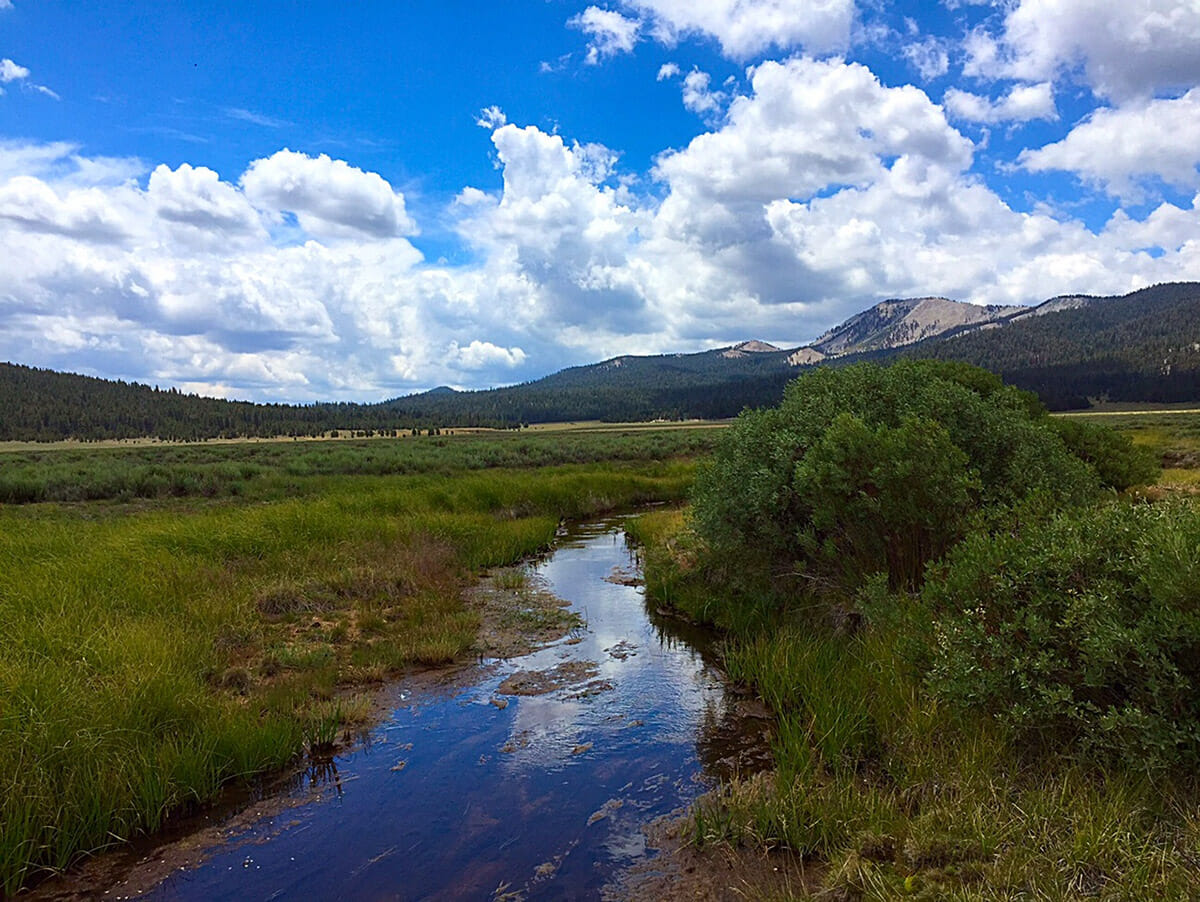CA’s science staff utilize low-tech processes for restoration in the remote native range of the golden trout
There are several drivers of Trout Unlimited’s coldwater conservation work, but science is its beating heart.
Many TU staff and volunteers — including the leading fish biologists, entomologists, hydrologists, ecologists, and mapping experts of our Science Program — are making vital contributions to research and analysis of trout and salmon populations and their habitats, and the efficacy of conservation tools and policies.
Jessica Strickland, director of TU’s California Inland Trout Program, is one of TU’s scientists helping to advance the science of stream and native trout restoration. She has been leading restoration projects in the high country of the southern Sierra for years.
The focus of this work is California’s state freshwater fish: the imperiled golden trout.

Jessica is an aquatic resources specialist and fisheries biologist by training. Good thing she’s also an avid hiker and outdoorswoman. The scenic alpine meadows and small streams that characterize much of the native range of the golden trout are an overnight hike or horseback ride from the nearest trailhead.
Jessica shared some of these contributions recently in an article about Process-Based Restoration (PBR) published in the quarterly newsletter of the California Society for Ecological Restoration (SERCAL). Jessica co-authored the article, Low-Tech Process-Based Meadow Restoration in the Kern Plateau-Golden Trout Wilderness, with project colleagues Nick Bouwes and Sabra Purdy.

The article describes the use of Low-Tech Process-Based Restoration (LTPBR) techniques — use of simple, cost-effective, hand-built structures that mimic natural influences on water flow and absorption such as beaver dams, wood accumulations, and sedge mats — for stream restoration under the Kern Plateau-Golden Trout Wilderness Meadow Restoration Project. The article describes this project as
a large-scale meadow restoration effort being undertaken by a diverse partnership including Trout Unlimited and other NGOs, the Inyo National Forest, consulting stream-meadow restoration practitioners, engineers, geomorphologists, and ecologists, through a grant awarded by California Department of Fish & Wildlife. The goal of the project is to restore natural hydrological, biological, and geomorphic processes — the design includes building structures in over 18 miles of stream will affect about 190 acres of riparian meadows in 15 meadow complexes, increasing resilience and ecosystem services, and improving aquatic, riparian, and floodplain habitats.
Stream channel and floodplain restoration projects often rely on engineered designs and heavy construction equipment. LTPBR takes advantage of natural stream processes to do much of the restoration “work,” thereby reducing design and implementation costs. This benefit allows the restoration to be scaled over a large area and in places where mechanized equipment and transportation cannot be utilized.
Read the full writeup on Jessica’s use of Low-Tech Process-Based Restoration in the remote native range of the golden trout on page 19 of the SERCAL newsletter.
Other work led or supported by TU staff and grassroots to advance the science of coldwater conservation is regularly recognized in other outlets. TU’s California Science Director, Rene Henery, for example, is featured in this article in Estuary magazine on the effort to bring back spring-run Chinook salmon to the San Joaquin River.
Henery has served on the Technical Advisory Committee of the San Joaquin River Restoration Program for more than a decade.

Of course, effective conservation of coldwater habitats and fish populations requires more than just science. It also requires sustained investment, advocacy and collaboration.
The passion of TU members and other anglers and stream stewards for protecting and restoring local streams and their trout and salmon populations is also critical to TU’s work. Water is life. We all need clean water and healthy rivers to thrive.
Partnerships are another key driver. TU works with tribes, ranchers, mining companies, vineyards, irrigation districts, townships, resource agencies — pretty much anyone interested in combining efforts — to solve conservation challenges in ways that improve river connectivity and resilience, water quality, and water supply security for people and fish.
But science guides all of it; even low-tech, beaver-inspired science many miles from the nearest road.



